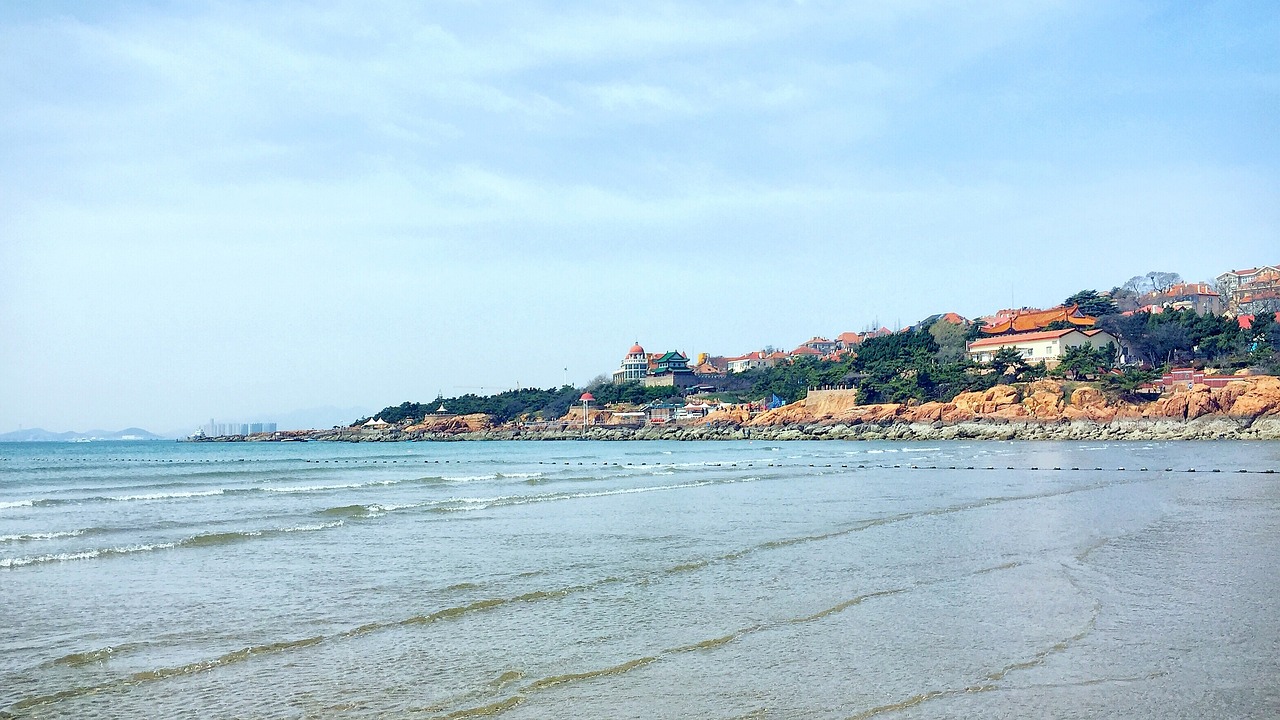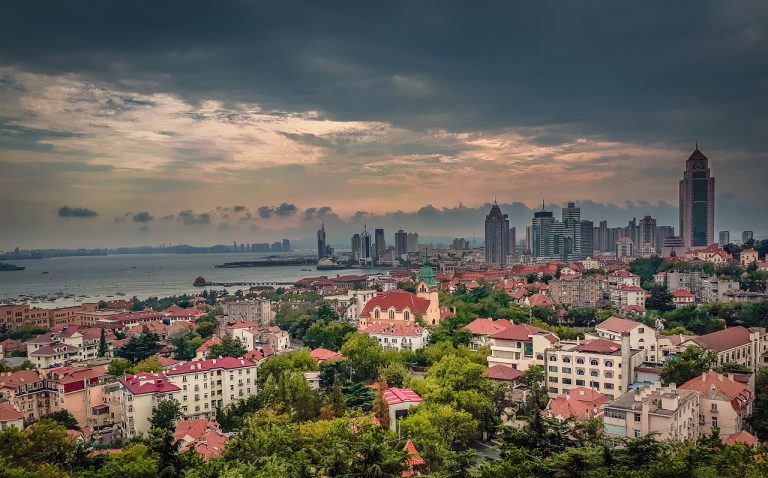Qingdao China Video
Historical Landmarks of Qingdao China: A Deep Dive
Qingdao, located in the eastern part of China, is a city rich in history and culture. It is known for its stunning coastline, German colonial architecture, and vibrant beer culture. In this article, we will take a deep dive into the historical landmarks of Qingdao, exploring the fascinating stories behind each one.
Signal Hill Park
- Qingdao’s Highest Point: Signal Hill Park is located in the center of Qingdao and is the highest point in the city. Standing at the top of the hill, visitors can enjoy panoramic views of the city and the sea.
- Historical Significance: The park has a rich history and was once used as a military observation post during the late Qing Dynasty. It played a crucial role in defending the city against foreign invasions.
- Beautiful Gardens: Signal Hill Park is not only known for its historical significance but also for its beautiful gardens. The park is filled with lush greenery, colorful flowers, and serene ponds, making it a peaceful oasis in the heart of the city.
Keywords: Signal Hill Park, Qingdao’s Highest Point, Historical Significance, Beautiful Gardens

Zhanqiao Pier
- Iconic Landmark: Zhanqiao Pier is one of the most iconic landmarks in Qingdao. It extends into the sea and is known for its distinctive red pagoda-style pavilion at the end.
- Historical Importance: Built in 1891, Zhanqiao Pier served as a crucial transportation hub during the colonial era. It played a significant role in the development of Qingdao as a major port city.
- Symbol of Qingdao: The pier has become a symbol of Qingdao and is often featured in postcards and promotional materials. It offers a picturesque view of the city skyline and the sea.
Keywords: Zhanqiao Pier, Iconic Landmark, Historical Importance, Symbol of Qingdao
Badaguan Scenic Area
- Historical Neighborhood: Badaguan, meaning “Eight Passes,” is a scenic area in Qingdao known for its charming streets and European-style villas. It was built during the German colonial period in the early 20th century.
- Distinct Architectural Styles: Each street in Badaguan showcases a different architectural style, including German, Russian, English, and French influences. The area is a testament to Qingdao’s multicultural heritage.
- Beautiful Gardens: Badaguan is also famous for its well-maintained gardens, which are adorned with colorful flowers and sculptures. It is a popular spot for leisurely walks and picnics.
Keywords: Badaguan Scenic Area, Historical Neighborhood, Distinct Architectural Styles, Beautiful Gardens

May Fourth Square
- Historical Significance: May Fourth Square is a large public square in Qingdao that commemorates the May Fourth Movement of 1919. It was a significant event in China’s history and marked a turning point in the country’s modernization.
- Monument to the Movement: The centerpiece of the square is the May Wind Monument, which symbolizes the spirit of the May Fourth Movement. It stands tall and serves as a reminder of the Chinese people’s pursuit of democracy and freedom.
- Modern Landmark: In addition to its historical significance, May Fourth Square has become a modern landmark in Qingdao. The square is surrounded by skyscrapers, luxury hotels, and high-end shopping malls.
Keywords: May Fourth Square, Historical Significance, Monument to the Movement, Modern Landmark
Qingdao Beer Museum
- Birthplace of Tsingtao Beer: The Qingdao Beer Museum is located in the former Tsingtao Brewery, which was founded by German settlers in 1903. It is the birthplace of Tsingtao Beer, one of China’s most famous beer brands.
- Interactive Exhibits: The museum offers interactive exhibits that take visitors on a journey through the history of brewing in Qingdao. Visitors can learn about the brewing process, see vintage beer bottles, and even taste different varieties of Tsingtao Beer.
- Cultural Experience: A visit to the Qingdao Beer Museum is not only educational but also a cultural experience. The museum showcases the city’s beer culture and its importance to the local community.
Keywords: Qingdao Beer Museum, Birthplace of Tsingtao Beer, Interactive Exhibits, Cultural Experience

Qingdao Underwater World
- Marine Life Exploration: Qingdao Underwater World is a popular tourist attraction that offers a unique opportunity to explore the wonders of the ocean. It features a variety of marine life, including sharks, sea turtles, and colorful coral reefs.
- Underwater Tunnel: The highlight of the aquarium is a mesmerizing underwater tunnel that allows visitors to walk through while surrounded by sharks and other fascinating sea creatures.
- Educational Programs: Qingdao Underwater World also provides educational programs and interactive exhibits to raise awareness about marine conservation and the importance of preserving aquatic ecosystems.
Keywords: Qingdao Underwater World, Marine Life Exploration, Underwater Tunnel, Educational Programs
Tianhou Palace
- Historic Temple: Tianhou Palace, also known as Mazu Temple, is a historic Taoist temple dedicated to the sea goddess Mazu. It was built during the Ming Dynasty and has been an important religious site for sailors and fishermen.
- Architectural Beauty: The temple features intricate wood carvings, colorful paintings, and ornate decorations. It is a fine example of traditional Chinese architecture and craftsmanship.
- Religious Festivals: Tianhou Palace hosts various religious festivals throughout the year, attracting worshippers from all over China. These festivals showcase traditional rituals, music, and performances.
Keywords: Tianhou Palace, Historic Temple, Architectural Beauty, Religious Festivals
Qingdao Naval Museum
- Naval History: The Qingdao Naval Museum is dedicated to preserving and showcasing the naval history of Qingdao. It provides insights into the city’s maritime heritage and its role in naval warfare.
- Exhibits and Artifacts: The museum houses a vast collection of exhibits and artifacts, including ship models, weapons, and historical documents. Visitors can learn about famous naval battles and the development of the Chinese Navy.
- Interactive Displays: The museum offers interactive displays that allow visitors to experience naval operations firsthand. From simulators to virtual reality exhibits, there are plenty of engaging activities for all ages.
Keywords: Qingdao Naval Museum, Naval History, Exhibits and Artifacts, Interactive Displays
Laoshan Mountain
- Natural Wonder: Laoshan Mountain is a majestic mountain range located on the outskirts of Qingdao. It is known for its breathtaking landscapes, lush forests, and ancient Taoist temples.
- Spiritual Retreat: The mountain has long been regarded as a spiritual retreat and a place of pilgrimage. Taoist hermits and monks have sought solace and enlightenment in its tranquil surroundings for centuries.
- Hiking and Scenic Views: Laoshan Mountain offers numerous hiking trails that lead to stunning viewpoints and hidden waterfalls. It is a paradise for outdoor enthusiasts and nature lovers.
Keywords: Laoshan Mountain, Natural Wonder, Spiritual Retreat, Hiking and Scenic Views
Conclusion
Qingdao is a city that seamlessly blends its rich history with modern development. From the historical landmarks like Signal Hill Park and Zhanqiao Pier to the cultural attractions like the Qingdao Beer Museum and Tianhou Palace, there is something for everyone to explore and appreciate. Whether you are interested in history, architecture, nature, or beer, Qingdao offers a diverse range of experiences that will leave a lasting impression.
References
- qingdaochina.com
- travelchinaguide.com
- chinahighlights.com
- tsingtao.com
- qdnm.org
- visitqingdao.net
- qdparks.com
- tripadvisor.com





